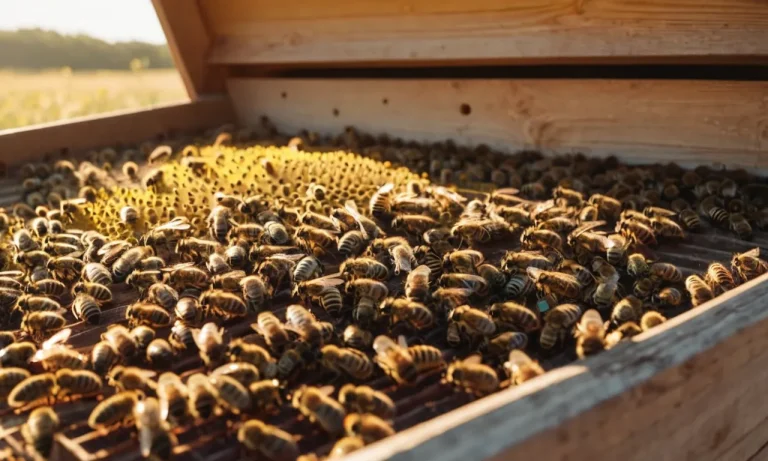The soothing sound of birds chirping outside your window is a common occurrence, especially in the early morning hours. But did you know that bird songs and calls have deeper meaning and significance? Understanding bird vocalizations provides insight into avian behavior and communication.
If you’re short on time, here’s a quick answer to your question: The sounds birds make outside your window are a form of communication. They serve purposes like defending territory, attracting mates, bonding with flock members, and signaling alarm or contentment.
In this comprehensive article, we will explore the intricacies of bird vocalizations heard outside your home. We’ll cover the meaning behind common bird calls and songs, how to interpret various chirps and tweets, and how to understand bird communication on a deeper level.
Common Bird Vocalizations and Their Meanings
Chirps
When you hear birds chirping outside your window, it’s usually a sign of happiness and contentment. Chirping is a common vocalization among birds and can have different meanings depending on the context. For example, a series of rapid and high-pitched chirps often indicates excitement or a call for attention. On the other hand, slower and softer chirps may signify relaxation or a sense of security.
Trills and Warbles
Trills and warbles are more complex bird vocalizations that often involve a combination of notes and tones. These melodious sounds are usually associated with courtship and mating rituals. Male birds often use trills and warbles to attract females and establish their territories. The intricate patterns and variations in these vocalizations can be quite mesmerizing to listen to and can vary significantly between bird species.
Squawks and Caws
Squawks and caws are harsh and loud vocalizations that are commonly heard from larger bird species such as crows and ravens. These calls serve various purposes, including warning signals, defense mechanisms, and territorial displays. Squawks and caws can be quite powerful and are often used by birds to assert dominance or to communicate danger to other members of their flock.
Understanding the meanings behind common bird vocalizations can provide valuable insights into the behavior and communication patterns of these fascinating creatures. It’s important to remember that each species of bird has its own unique vocal repertoire, so it’s worth exploring further to discover the specific meanings behind the chirps, trills, squawks, and caws of the birds in your area.
Deciphering Specific Bird Calls
Northern Cardinal
The Northern Cardinal is a common bird known for its distinctive call. The male cardinal’s song is a series of clear, whistled notes that are often described as sounding like the bird is saying “cheer-cheer-cheer” or “birdie-birdie-birdie.” This melodic tune is used by male cardinals to establish territory and attract mates. If you hear a cardinal singing outside your window, it may be a sign that spring is near and breeding season is underway.
Mourning Dove
The soothing cooing sound of the Mourning Dove is a familiar sound in many backyards. Their call is a soft, mournful “coo-OO-oo” that can be quite calming to listen to. Mourning Doves are monogamous birds, and their call is often heard during courtship displays. If you hear these gentle coos outside your window, it’s a good reminder to take a moment to appreciate the simple beauty of nature.
Chickadee
The Black-capped Chickadee is a small bird with a big personality. Its call is a distinctive “chick-a-dee-dee-dee” or “fee-bee-ee” sound. This vocalization serves multiple purposes for the chickadee. It helps them communicate with other members of their flock, establish territory, and warn of potential predators. The chickadee’s call is often associated with curiosity and fearlessness, as these tiny birds are known for their bold behavior and willingness to approach humans.
Understanding the specific calls of different bird species can add an extra layer of enjoyment to birdwatching. By familiarizing yourself with the unique sounds of birds like the Northern Cardinal, Mourning Dove, and Chickadee, you can start to decipher their messages and gain a deeper appreciation for the natural world around you.
The Science Behind Bird Vocal Communication
Have you ever wondered why birds chirp so much? The truth is, bird vocalizations serve a crucial purpose in their lives. Birds use their calls and songs to communicate with one another, establish territory, attract mates, and warn of potential dangers. These vocalizations are not random; they are carefully crafted messages that convey specific meanings. Understanding the science behind bird vocal communication can help us appreciate the complexity and beauty of their songs.
Purpose of Bird Vocalizations
Birds have evolved to use vocalizations as a means of survival and social interaction. One of the main purposes of bird vocalizations is to establish territory. By singing loudly and consistently, male birds mark their territory and communicate to other males that the area is already claimed. Additionally, birds use their vocalizations to attract mates. Male birds often have elaborate and melodious songs that demonstrate their fitness and genetic quality to potential mates. Female birds, on the other hand, may use calls to communicate their availability and willingness to mate.
How Birds Make Different Sounds
Unlike humans, birds do not have vocal cords. Instead, they produce sound using a specialized vocal organ called the syrinx. The syrinx is located at the base of the bird’s trachea and is capable of producing a wide range of sounds. Birds can manipulate the pitch, volume, and rhythm of their vocalizations by controlling the airflow and tension of the muscles surrounding the syrinx. This remarkable adaptation allows birds to create an incredible variety of calls and songs.
Regional Dialects in Bird Species
Just like humans, birds also have regional dialects. Certain bird species have distinct vocalizations that vary from one geographic region to another. These regional dialects can be influenced by factors such as habitat, social learning, and genetic differences. For example, the song of the Eastern Meadowlark in the eastern United States may sound different from its western counterpart due to variations in habitat and genetic makeup. These regional dialects can help birds identify individuals from their own population and may play a role in mate selection and territorial boundaries.
Understanding the science behind bird vocal communication offers a fascinating glimpse into the complex world of avian behavior. By studying bird vocalizations, scientists can gain insights into topics such as species identification, population dynamics, and even the impact of environmental changes on bird communities. So the next time you hear birds chirping outside your window, take a moment to appreciate the intricate language they are speaking and the remarkable science behind their songs.
Interpreting Bird Chatter Outside Your Home
There’s something magical about waking up to the sound of birds chirping outside your window. But have you ever wondered what these feathered creatures are trying to communicate? Bird chatter is not just random noise; it carries meaning and can give us insights into their behavior and emotions. Let’s dive deeper into the world of bird communication and explore the different messages they may be conveying.
Understanding Bird Behavior
Birds communicate with each other using a variety of vocalizations, including chirps, trills, and songs. These sounds serve different purposes, such as establishing territory, attracting mates, and warning others of potential dangers. By paying attention to the patterns and frequencies of their calls, you can gain a better understanding of the behavior of the birds outside your window.
Did you know? Some bird species are known for their remarkable mimicry skills. For instance, the northern mockingbird can imitate the songs of over 200 different bird species, as well as non-bird sounds like car alarms and cell phone ringtones. Talk about a talented vocalist!
Signs of Distress or Agitation
While birdsong is often associated with joy and tranquility, it’s crucial to recognize when birds may be in distress or feeling agitated. High-pitched calls, rapid and repetitive chirping, or a sudden increase in volume may indicate that a bird is facing a threat or experiencing discomfort. In such cases, it’s best to avoid disturbing them further and provide a safe environment for them to calm down.
Tip: If you notice a bird repeatedly flying into your window, it may be seeing its reflection and mistaking it for a rival bird. Try placing decals or stickers on the window to break up the reflection and prevent potential injuries to the bird.
Indicators of Joy and Contentment
On the other hand, certain bird sounds can signal happiness and contentment. Soft, melodic songs or cheerful trills are often associated with birds that are relaxed and in a positive state of mind. Observing birds engaging in activities like preening, hopping, or feeding can also be indications of their well-being and overall satisfaction with their surroundings.
Fun fact: Did you know that some birds engage in communal singing? Species like the Australian magpie and the European blackbird have been observed participating in group performances, creating harmonious melodies that can last for several minutes. It’s like a bird choir concert right outside your window!
Understanding the meaning behind the bird chatter outside your window can deepen your appreciation for the natural world and provide insights into the lives of these fascinating creatures. So next time you wake up to the cheerful symphony of birdsong, take a moment to listen, observe, and marvel at the beauty of their communication.
Enriching Your Connections With Nearby Birds
The Benefits of Observing Birds
Spending time observing and connecting with birds can have a range of benefits for both our mental and physical well-being. Bird-watching, also known as birding, can provide a sense of relaxation and tranquility as we immerse ourselves in nature’s beauty. It allows us to step away from the hustle and bustle of daily life and appreciate the simpler things in our surroundings. Additionally, birding can help us develop a deeper understanding and appreciation for the natural world around us.
Connecting with Nature
When we take the time to observe and listen to the birds chirping outside our window, we are actively engaging with nature. This connection with the natural world has been shown to reduce stress levels, boost mood, and improve overall mental well-being. Research has even suggested that spending time in nature, such as bird-watching, can have a positive impact on our cognitive function and creativity.
Learning About Bird Behavior
By observing birds in their natural habitat, we can gain valuable insights into their behavior and ecology. We can learn about their feeding patterns, nesting habits, and migration routes. This knowledge not only deepens our understanding of birds but also contributes to conservation efforts. By understanding the needs and behaviors of different bird species, we can better protect their habitats and ensure their continued survival.
Building a Community
Bird-watching can be a social activity that brings people together. Whether it’s joining a local birding club or participating in citizen science projects, birding provides opportunities to connect with like-minded individuals who share a passion for birds and nature. These connections can lead to new friendships, shared experiences, and a greater sense of belonging to a community that values the natural world.
Resources for Bird-Watching Enthusiasts
If you’re interested in exploring bird-watching further, there are numerous resources available to help you get started. Websites like Audubon.org and BirdWatcher’s Digest provide information on bird identification, birding hotspots, and tips for attracting birds to your backyard. Field guides and smartphone apps can also be valuable tools for identifying birds and recording observations.
So, the next time you hear birds chirping outside your window, take a moment to pause and appreciate their presence. By connecting with these nearby birds, you may find yourself feeling more connected to nature, gaining knowledge about the avian world, and becoming part of a community that celebrates the wonders of our feathered friends.
Conclusion
The songs and calls of our avian neighbors provide insight into the fascinating world of bird communication. Tuning into the chatter outside your window not only connects you to nature, but also allows you to understand bird behavior on a deeper level.
So next time you hear the chirps, trills and squawks of birds outside, remember they are full of meaning. Appreciating the language of birds fosters awareness and enriches our human experience.






